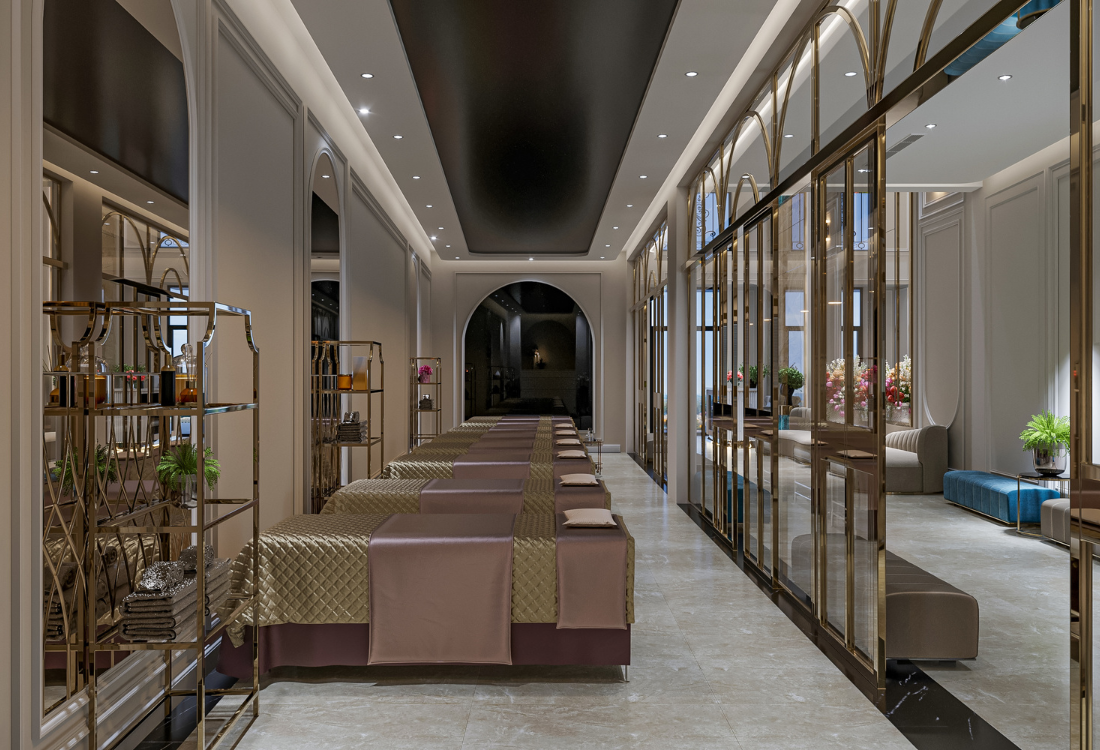Our Blog

What constitutes ‘high-end’ in terms of wayfinding signage? This is an important consideration for premium retail, hospitality, and corporate environments, in which the design and physical composition of wayfinding signs can often set the tone for the customer experience.
To be high-end doesn’t necessarily require you to install a handwritten, baroque, gilt plated sign outside every toilet (although you could if you wanted to), but there are certain principles to consider that immediately raise the standard of wayfinding signs compared to more ‘standard’ or ‘low end’ signs. Let’s take a look:
1. Integration with the building’s architecture and design
The first principle of high-end wayfinding signage is the way that it integrates with and complements the building’s architecture and interiors. This makes the signage feel like a natural extension of your space rather than an afterthought. Thoughtful placement is the key to this integration, which is why, at Image Technique, we aim to understand exactly where signs are intended to be used before going to the drawing board. Adaptation to the sign’s surroundings helps every sign to harmonise with your building’s aesthetic and architecture, from interiors to outdoor settings. This delivers a more cohesive visual experience for your customers. In terms of installation, discrete placement allows wayfinding signage to guide customers without disrupting the beauty of your space. Ultimately, this is a case of personalisation as opposed to standardisation. Think of the wayfinding signs you might have seen in local authority museums across the country. These are often produced in bulk without reference to the context, and once you’ve seen one, you’ve seen them all. A high-end bespoke wayfinding sign, on the other hand, is unique to its individual context.
2. Reflection of brand identity and values
The difference between signage that looks like it’s been printed from a free MS Word template and high-end signage is the way that premium signage embodies the values and identity of the brand it represents. Even though wayfinding signage isn’t specifically a marketing tool, it’s important that every detail of the design should reinforce your commitment to exceptional quality and the customer experience. This is why high-end signs often look radically different from customer to customer – because of the way that each design is configured to the aesthetic and personality of the individual brand – whether understated and modern, garishly rococo, or bold and avant-garde.
3. Premium quality materials
The materials that are used in high-end premium wayfinding signage should reflect the aesthetic values and approach used throughout the rest of the premises. A crude MDF sign above an Italian hand polished marble countertop is going to look out of place. For signage to appear high-end, there has to be seamless consistency. Investing in premium materials will help create a tactile sense of sophistication in your space that makes the signage feel as premium as its surroundings. There is no hard and fast definition of what constitutes ‘premium’ materials, but quality should be your guide. Natural or natural-effect elements are popular at the moment, including natural and sustainable harvested woods, various stones, and glass elements, while other signage designs feature metallic finishes, such as brushed aluminium or brass. Etched or backlit designs can also make signage visually striking while maintaining subtlety.
Find out more
Get in touch with the team at Image Technique today to find out more about our bespoke signage design and manufacturing service, and how wayfinding signage can elevate the function and feel of your luxury space.
Image source: Canva



